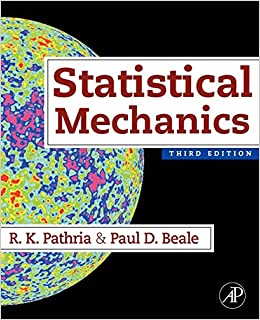At (T=0 K), the chemical potential of a thermodynamic system is given by [ mu=left(frac{partial E}{partial N}ight)_{v}=frac{partial(E
Question:
At \(T=0 K\), the chemical potential of a thermodynamic system is given by
\[
\mu=\left(\frac{\partial E}{\partial N}ight)_{v}=\frac{\partial(E / V)}{\partial(N / V)}
\]
It follows that, in the ground state of the given system,
\[
E=V \int_{0}^{n} \mu(n) d n=\frac{N}{n} \int_{0}^{n} \mu(n) d n \quad\left(n=\frac{N}{V}ight)
\]
Now, since \(p_{F}=\left(3 \pi^{2} night)^{1 / 3} \hbar\), the given expression for \(\mu\) may be written as
\[
\mu(n) \simeq\left(3 \pi^{2} night)^{2 / 3} \frac{\hbar^{2}}{2 m}+(2 \pi n) \frac{\hbar^{2} a}{m}+\left(3 \pi^{2} night)^{4 / 3} \frac{2}{15 \pi^{2}}(11-2 \ln 2) \frac{\hbar^{2} a^{2}}{m} .
\]
It follows that
\[
\frac{E}{N} \simeq \frac{3}{5}\left(3 \pi^{2} night)^{2 / 3} \frac{\hbar^{2}}{2 m}+\frac{1}{2}(2 \pi n) \frac{\hbar^{2} a}{m}+\frac{3}{7}\left(3 \pi^{2} night)^{4 / 3} \frac{2}{15 \pi^{2}}(11-2 \ln 2) \frac{\hbar^{2} a^{2}}{m}
\]
which agrees with eqn. (11.7.31).
Step by Step Answer:






